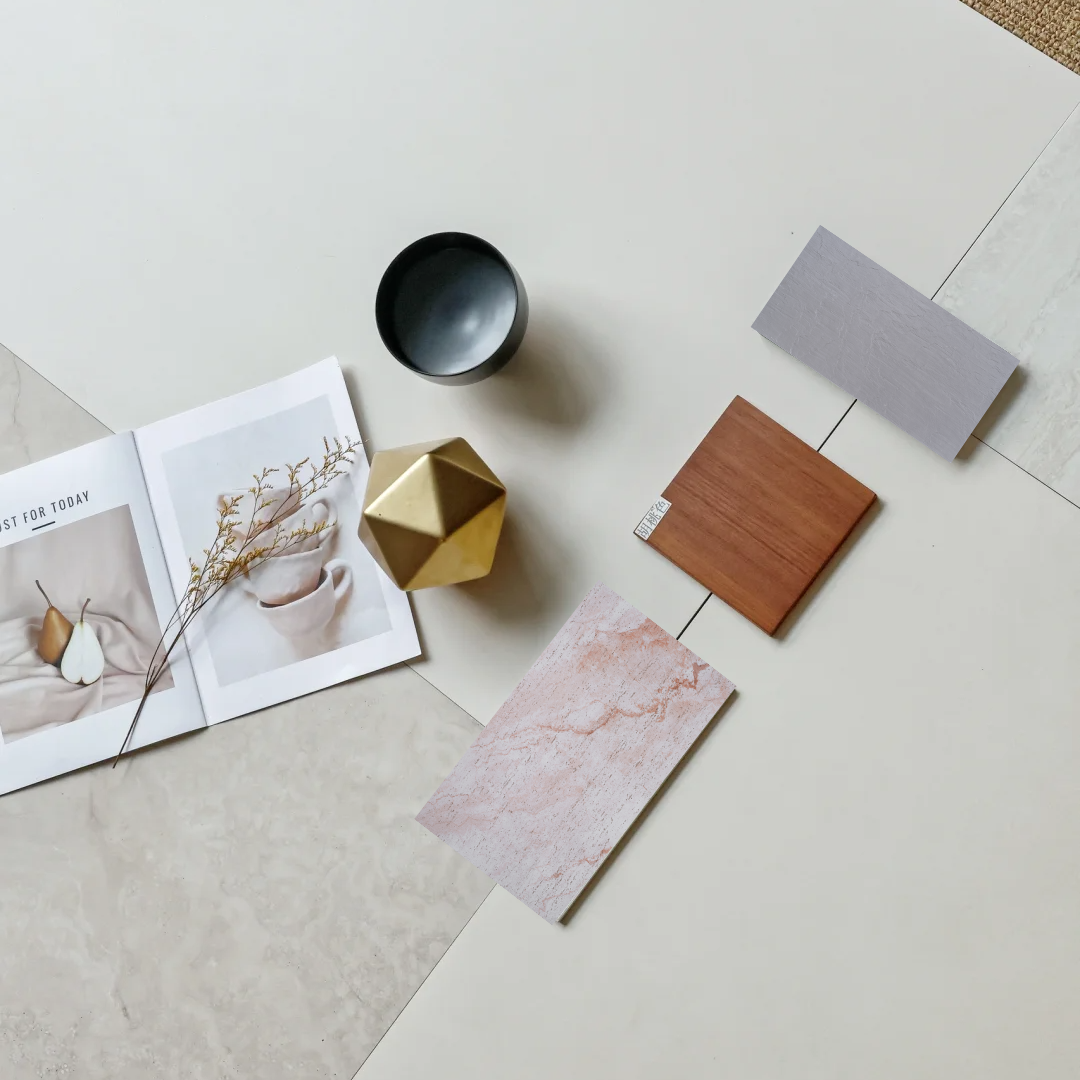Product Basics
Flexible stone panels are a new generation of eco-friendly building materials designed to replicate the feel and look of natural stone while remaining lightweight and adaptable. They are created by forming, baking, printing, and cutting a blend of inorganic materials and glass fiber mesh into sheets, coils, or blocks.
We have six main series, namely Travertine Series, Natural Stone Series, Art Stone Texture Series, Cement Board Series, Wood Grain Series, Split Brick Series.
- It starts with soil, stone powder, volcanic ash, and other inorganic minerals carefully collected from nature.
- These particles are crushed into a fine powder and coated with eco-friendly surfactants, which enhance bonding strength and minimize environmental impact.
- The treated material is pressed into silicone molds together with fiberglass mesh, which gives the panel its backbone and natural 3D stone texture.
- Each sheet is baked at controlled temperatures between 160 °C and 200°C for about 6 hours, creating panels that stay stable even in hot, humid, or challenging climates.
- High-resolution printing adds realistic veining and patterns, then a protective seal is applied to resist UV damage and stains.
- High-guality flexible stone panels begin with clean, consistent mineral powders and reinforced fiberglass mesh.
- Anyone can print a stone pattern, but not everyone can make it feel like one. Touch a Vista panel and you’ll sense it — each layer of ink sits exactly where it should, forming veins that look almost geological.
- Each batch of high-quality products should have consistent flexibility and thickness. You can observe whether the thickness of the left and right sides of the same panel is consistent and whether the softness of the product is consistent.
4. High-quality panels should bond smoothly to surfaces without peeling, bubbling, or producing hollow sounds after installation.
5. Premium panels undergo fire and stain testing to verify long-term performance.
With four generations of 3D online printers and industry-leading 3D printing technology, we have a more scientific and reasonable printing line process, faster printing speed and clarity, and we maintain quality control of each batch of products.
Because each step (from eco treatment to curing and sealing) is designed to make sure your walls, facades, or interiors hold their finish for years without warping, peeling, or fading. It’s natural stone aesthetics, engineered for the realities of modern construction.
- Maintain the visual appeal of real stone.
- Does not require complex handling.
- Can be installed with ease.
- Lightweight and thin (2mm-5mm thick only).
Yes, our products undergo chemical corrosion tests and resistance tests to artificial aging according to China’s standards.
Applications & Design
1.Interior Walls
Ideal for living rooms, bedrooms, and offices where you want to add warmth and depth.
2.Background Walls
Perfect for TV walls, reception counters, or dining spaces where lighting can highlight textures.
3.Old Wall Renovation
Can be applied directly over existing surfaces—saving time, cost, and demolition debris.
Our products can be used for wall covering, but are not recommended for use on flooring.
No, we do not recommend using it in shower rooms or wet rooms, as our products are not designed to be exposed to large amounts of moisture for extended periods of time.
Technical Data & Certification
We offer 9 sizes to choose from, also customize product sizes according to customer needs.
Taking the 1200x600mm Travertine series as an example, we can have a full load 24cbm, which is a total of 3870 square meters.
The weight of each series is different, taking Australian sandstone as an example, a piece of 1200x600 mm weighs about 3 kg, and a piece of 24001200 mm weighs about 11 kg.
The thickness of each series is different. For example, the thickness of Travertine is about 3±0.5 mm, and the thickness of Rough Granite is 3-5 mm.
Purchasing & Services
We specialize in B2B sales. You can purchase directly from us as a:
- Project Importer / Contractor
- Wholesaler or Distributor
- OEM Partner
Please submit a quote request or contact our sales team for partnership details and volume.
Yes, free samples will be provided.
Installation & Maintenance
- The base must be dry and clean. New walls should be fully cured, while older ones may need flaking paint removed and cracks or holes repaired. Any unevenness greater than three millimeters across two meters can create hollow spots later on.
- Standard cement mortar is not recommended because it shrinks and can cause panels to detach. A polymer-enhanced flexible tile adhesive is the proper choice.
3. Leave 1.5 to 3 millimeters between sheets. Spacers help maintain even joints and prevent buckling as the material expands and contracts.
4. Spread adhesive evenly with a notched trowel, press the panels firmly into place, and use a rubber mallet or vibration tool to ensure full contact and remove air pockets. Any adhesive that seeps onto the surface should be wiped away immediately with a damp cloth.
5. Do this by moving the pressure up and down. You can then use masking tape to protect gaps from both sides, then fill the gap with a caulking agent.
- Routine cleaning with a damp cloth helps remove everyday dust, while a pH-neutral cleaner works best for stubborn stains.
- Avoid harsh chemicals like bleach, acids, or strong alkalis since they can dull or damage the stone’s natural look.
- Curing and protection Allow 24–72 hours for adhesives to fully set, and ensure new installations are not washed by rain for at least 48 hours.
- Annual inspection of joints, edges, and adhesive ensures early detection of wear, preventing costly repairs later.
- No soaking required before installation, unlike traditional clay tiles.
Sheet Metal/Oriented Strand Board/Old Tile/Keel/Blank Wall
Routine cleaning with a damp cloth helps remove everyday dust, while a pH-neutral cleaner works best for stubborn stains.
Avoid harsh chemicals like bleach, acids, or strong alkalis since they can dull or damage the stone’s natural look.


